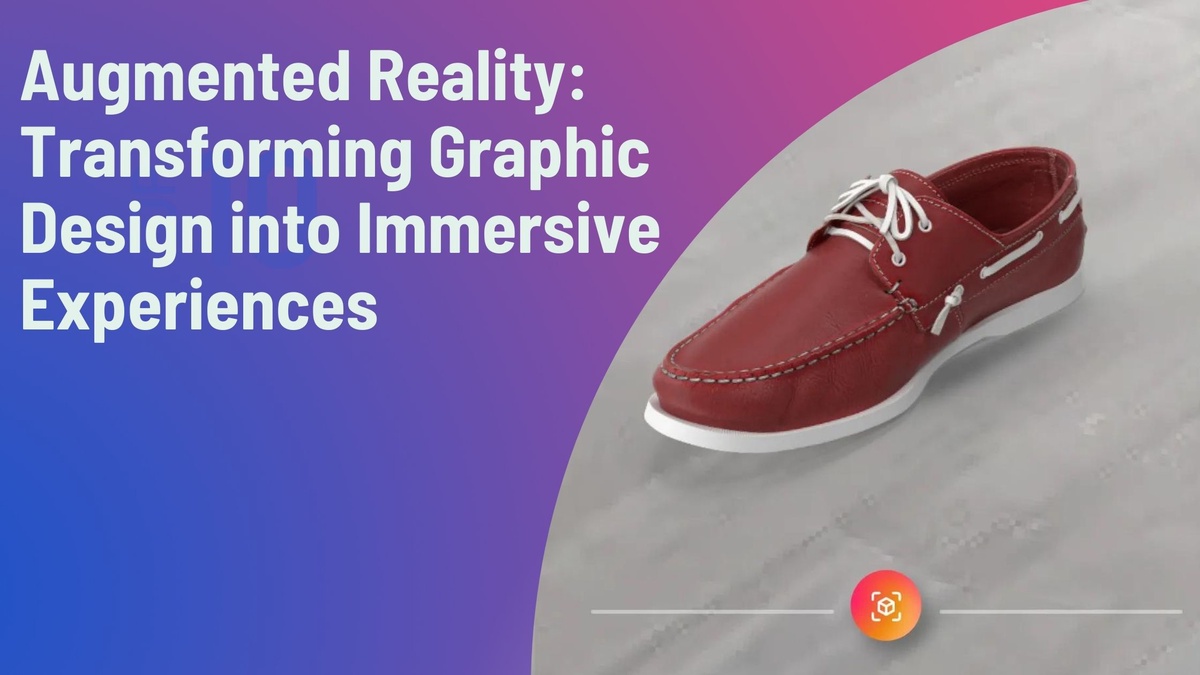In recent years, the realm of graphic design has experienced a seismic shift, propelled by the integration of cutting-edge technology. Among these advancements, augmented reality (AR) stands out as a game-changer, revolutionizing how designers create and users interact with visual content. In this blog post, we'll explore how augmented reality is reshaping the landscape of graphic design and the role of augmented reality design agencies in this transformative process.
Understanding Augmented Reality
Augmented reality refers to the overlay of digital information onto the real world, blending virtual elements seamlessly with physical surroundings. Unlike virtual reality (VR), which immerses users in entirely simulated environments, AR enhances the real world by adding computer-generated elements such as images, videos, or 3D models. This technology has found diverse applications across industries, from entertainment and gaming to healthcare and education.
The Evolution of Graphic Design
Graphic design has always been about communication and storytelling through visuals. Traditionally, designers have relied on static mediums like print and digital screens to convey their message. However, with the advent of AR, graphic design has transcended these limitations, unlocking new dimensions of interactivity and engagement.
Augmented Reality in Graphic Design
The integration of AR into graphic design introduces a paradigm shift, enabling designers to create immersive experiences that blur the line between the virtual and physical worlds. Here's how AR is reshaping graphic design:
Interactive Branding: AR allows brands to create interactive marketing campaigns that captivate audiences and foster deeper connections. From AR-enabled packaging to virtual try-on experiences, brands can engage customers in innovative ways, leaving a lasting impression.
Spatial Design: AR enables designers to visualize how their creations will interact with real-world environments. Whether designing interior spaces, outdoor installations, or product displays, AR provides a virtual canvas for experimentation and optimization.
Enhanced Storytelling: AR breathes life into static graphics, transforming them into dynamic narratives. Through AR-enhanced books, magazines, and advertisements, designers can deliver immersive storytelling experiences that captivate and resonate with audiences.
Personalized Experiences: AR empowers designers to tailor content based on user interactions and preferences. By leveraging real-time data and user feedback, designers can create personalized AR experiences that adapt to individual needs and interests.
The Role of Augmented Reality Design Agencies
As the demand for AR-driven experiences continues to grow, augmented reality design agencies have emerged as indispensable partners for brands and businesses seeking to harness this technology effectively. These agencies specialize in crafting bespoke AR solutions tailored to their clients' objectives, leveraging their expertise in graphic design, software development, and user experience (UX) design.
Augmented reality design agencies offer a range of services, including:
Concept Development: Collaborating closely with clients to conceptualize AR experiences that align with their brand identity and objectives.
Content Creation: Designing high-quality visuals, animations, and 3D models optimized for AR delivery across various platforms.
Technical Implementation: Developing custom AR applications and platforms that deliver seamless user experiences across devices.
Analytics and Optimization: Monitoring performance metrics and user feedback to continuously refine and enhance AR experiences over time.
By partnering with an augmented reality design agency, brands can unlock the full potential of AR technology, creating immersive and impactful experiences that drive engagement, loyalty, and growth.
Conclusion
Augmented reality represents a paradigm shift in graphic design, empowering designers to create immersive experiences that transcend the boundaries of traditional mediums. As AR continues to evolve and permeate various aspects of our lives, the role of augmented reality design agencies will become increasingly vital in helping brands harness the full potential of this transformative technology. By embracing AR, designers can unlock new dimensions of creativity and storytelling, ushering in a new era of immersive graphic design.
In this dynamic landscape, the fusion of artistry and technology holds boundless possibilities, reshaping how we perceive and interact with the world around us. As we venture further into the realm of augmented reality, one thing remains clear: the future of graphic design is anything but static.


No comments yet